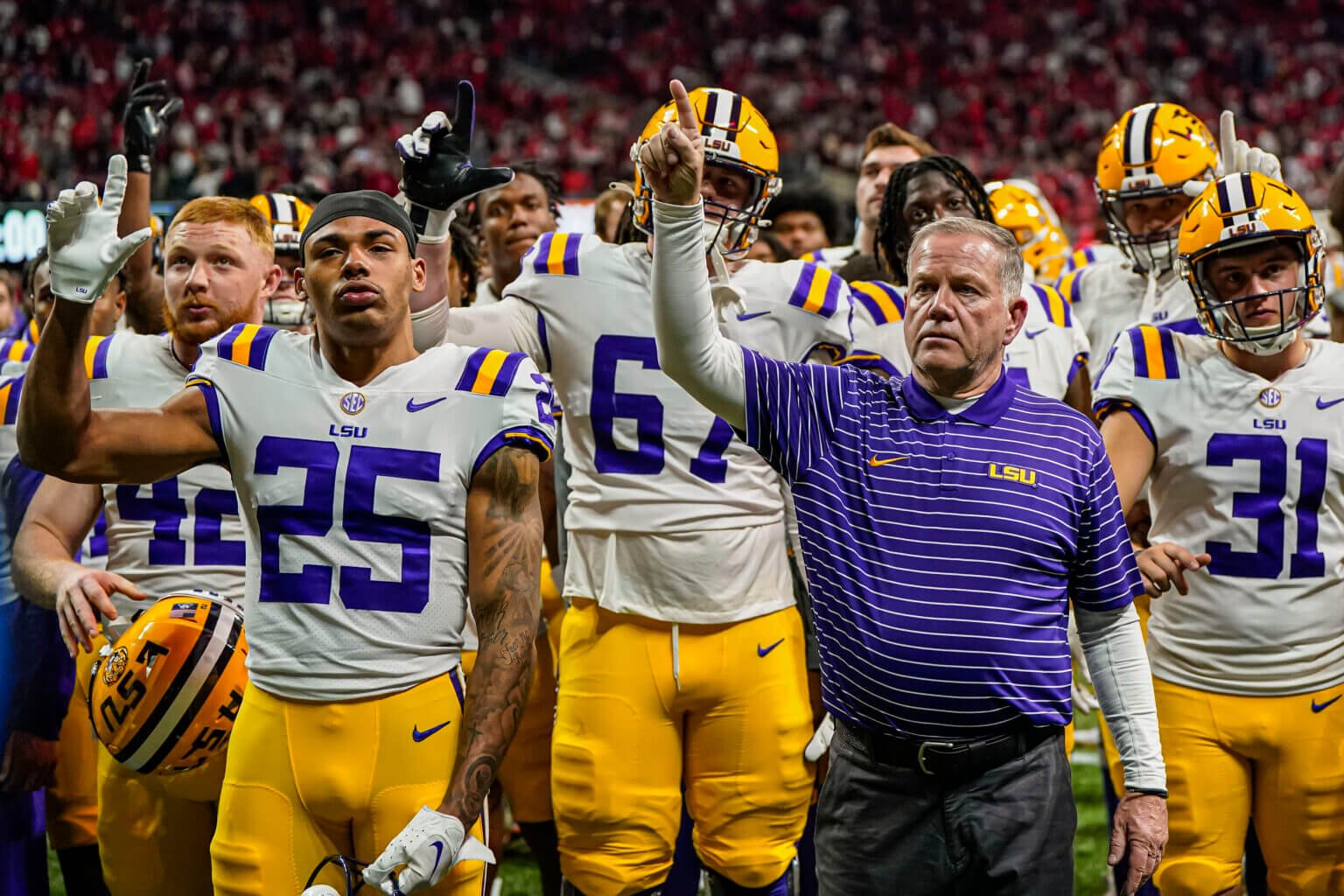During spring break of my senior year at Northwestern, my friends and I woke up one morning at our hotel in Vegas to learn that the FBI had charged two of the school’s recent men’s basketball players with point-shaving. It was an absolute bombshell of a scandal at the time.
When news broke last week about now fired-Alabama baseball coach Brad Bohannon’s alleged involvement in a gambling scheme, my main reaction was: How did we make it this long without another one?
Advertisement
Note: Submitted questions have been lightly edited for length and clarity.
What do you make of the recent gambling scandals at Alabama, Iowa and Iowa State? To me, it feels like the tip of the iceberg, and I would guess if one dug around there are student-athletes at about every member institution gambling on sports in violation of NCAA guidelines. — Brad R., Knoxville, Tenn.
Can we agree the Alabama baseball story is completely different, and far more serious than what we know so far about the Iowa schools? In the former, a person placed two suspiciously large bets on a game while allegedly on the phone with the coach of one of the teams. The mere possibility he was conspiring to fix the outcome of a contest is a sports organization’s worst nightmare.
Whereas the Iowa situation appears to be a straight-up case of athletes placing online sports bets, which, if they were under 21, is against the law in that state, but even if of age, would be in violation of NCAA rules that prohibit athletes from betting on any sport — college, professional or international — that the NCAA sponsors.
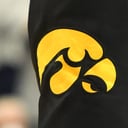
GO DEEPER
Iowa, Iowa State athletes under investigation for online sports wagers
The Alabama story has elicited interesting debate over the impact of legalized sports betting. On the one hand, you have people understandably linking what happened to the normalization of sports gambling ever since the Supreme Court’s 2018 decision ending the federal ban — as encapsulated by the bet being placed at a sportsbook inside the stadium of Pete Rose’s Cincinnati Reds. Personally, I think it’s naïve to assume schemes like that haven’t been going on undetected for decades; now, with more regulatory oversight, there’s a means to actually catch them — which, one would hope, will deter future game-fixers.
With Iowa, there’s a different debate to be had that I’m not yet hearing, which is: Why, in 2023, is the NCAA still enforcing such a broadly punitive rule that feels like it’s rooted in a pre-Internet era? Obviously, athletes should not be allowed to bet on their own school’s sporting events. (They may know the participants.) I’d even extend it to all college sports events since people have friends at other schools who may have inside information, as well as the professional versions of their own sport, where a current Iowa player may still be in contact with a former Iowa player who’s now on an NFL team.
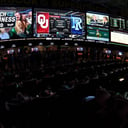
GO DEEPER
Alabama baseball spotlights college sports’ ongoing gambling debate
But the NCAA rule is so strict that if you’re a walk-on lacrosse player, you can’t be in a fantasy football league with friends in your dorm, much less pop on FanDuel to place a $20 live bet on the Celtics-Sixers game. If this seems extreme and unreasonable, it is in fact more comprehensive than any of the major pro leagues. Detroit Lions receiver Jameson Williams recently got suspended for betting on other sports, but only because he did so at a league facility. There’s no rule prohibiting them, or any NBA, MLB or NHL player, from placing bets on other sports leagues on their own time.
Advertisement
According to the NCAA’s website, the rules are the way they are because “(gambling) demeans the competition and competitors alike by spreading a message that is contrary to the purpose and meaning of ‘sport.’” Not only is this the height of hypocrisy from an organization that runs an official “March Madness bracket contest” on its own site, but it reeks of the same patronizing rationale behind the decades-long fight to “protect” athletes by preserving amateurism.
The rule might as well say: “We don’t trust you kids to not lose all your money, so we’re just not going to let you do it.”
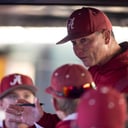
GO DEEPER
A brief history of college sports gambling scandals
Given that legalized sports betting is moving to more states, and given that advertisements for gambling companies (including on The Athletic) are only going to become more pervasive, I’d strongly encourage the NCAA to modernize its policy. It’s unrealistic to think you’re going to stop tens of thousands of 18-to-23-year-olds from gambling on sports entirely. A potentially endless web of investigating and declaring kids ineligible for something that has zero impact on the “integrity” of their sport is not useful for anybody.
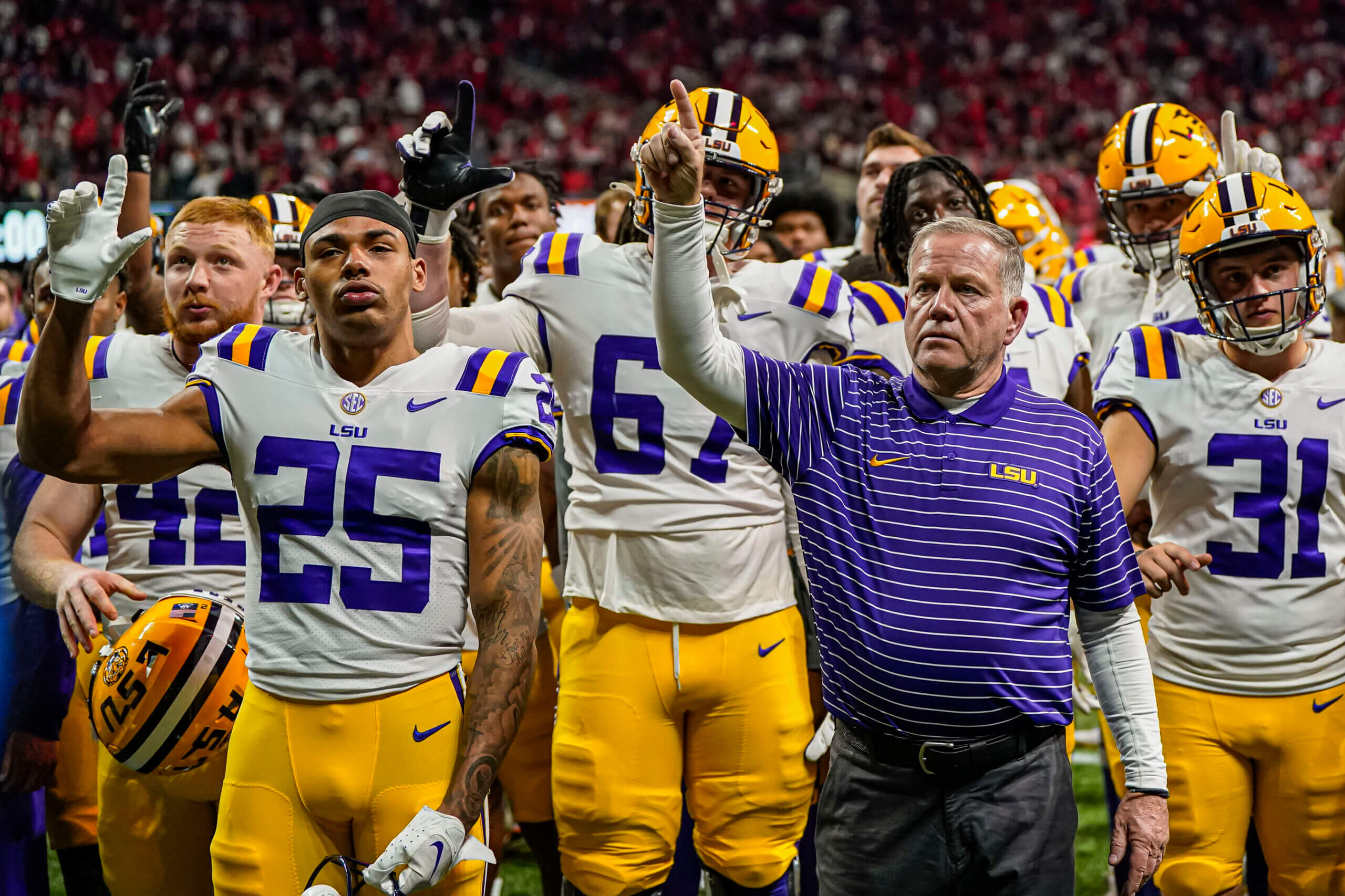
A “loaded” LSU team comes in at No. 2 on your most recent early Top 25. The Texas A&M team that dismantled LSU in last year’s final regular season game and returns 19 of the 22 starters that night doesn’t show up in your Top 25 at all. What is more likely in 2023: LSU falls back to the middle of the SEC West pack, or A&M challenges for the SEC West title? — Dave K.
So I must confess, I didn’t immediately remember the details of that Thanksgiving weekend game (a 38-23 Aggies upset) upon reading this question, nor did I realize the 19 of 22 stat. So I went back and looked and .. oh, I remember it now. That was the night Devon Achane went off for career highs of 38 carries and 215 yards.
Unfortunately for A&M, he’s one of three starters not returning.
Advertisement
I would say my lean here has changed over the last several months. Coming off last season, I too, had a similar “glass half full” opinion on A&M, so much so that I included the Aggies in my initial Top 25 in January. I suspected there was more talent there than a 5-7 record would indicate, including a lot of young guys, most notably QB Conner Weigman, that did not have a chance to contribute most of last season. And perhaps most importantly, Jimbo Fisher hired OC Bobby Petrino, who I still regard as one of the premier offensive minds in the sport, for a job he desperately needed to hit on.
But with some distance, no, I do not see A&M challenging in the SEC West. Because for one thing, the Aggies have only come close once in Jimbo’s five seasons, and I think we’re past the “on the cusp of a breakout” phase of his program. Also, when asked about Petrino’s impact this spring, Jimbo seemed to be going out of his way to … preemptively downplay it? Is he really going to put his ego aside to make room for somebody else? Also: I’m not sure putting together a staff full of controversial castoffs — Petrino, defensive coordinator DJ Durkin, O-line coach Steve Addazio — is the formula for a championship culture.
Fisher could certainly prove me wrong, and maybe A&M jumps from five wins to 10. There’s just nothing remotely concrete to indicate that’s coming. Whereas Brian Kelly’s got a long, multi-school track record of coming in and turning a program into a big winner. Which is why I’d be more shocked if LSU, with a Heisman-caliber QB, five returning O-line starters and possibly the best defensive front in the country, falls from winning the division in his first year to finishing in fourth place the next.

GO DEEPER
Mandel’s post-spring Too Early Top 25
If you are Deion Sanders, would you be pushing for Colorado to stay in the Pac-12 or to go to the Big 12? If the media rights money is about the same, which conference provides the better chance to turn around the program and get into a 12-team playoff? — Greg in Dunwoody, Ga.
Only Deion could say what he prioritizes in terms of conference membership, but if he’s like most coaches, he cares primarily about one thing and one thing only: recruiting. Which conference gives his program the ability to recruit the most blue-chip prospects? (Although, after convincing the No. 1 recruit in the Class of 2022 to sign with Jackson State, the answer may be “it doesn’t matter.”)
On the one hand, there’s a strong case to be made that it’s the Big 12, entirely because of the conference’s roots in Texas. If I could only have access to one of these two states to fill my roster, California or Texas, I’m picking the latter. Not to mention Deion is royalty in Dallas. And I’m not just talking about high school recruits. So many programs around the country take kids out of Texas; when they enter the portal, many want to either come back to the state or at least play there frequently.
On the flip side, though, having Texas as a base has not helped any of the current Big 12 programs (minus Texas and Oklahoma) land hordes of four- and five-star talent. As has been well documented, none of the so-called Leftover Eight, nor the four incoming schools, have regularly signed Top 25 classes, though TCU, first under Gary Patterson and now Sonny Dykes, has been cracking the list every two or three years recently. (It finished No. 23 this year.)
Conversely, the Pac-12 left-behinds include recruiting power Oregon and frequent Top 25 finishers Washington and Stanford (pre-downturn). It can be done. Furthermore, we know the top West Coast players are more open than ever to leaving the Pacific time zone for college — see Bryce Young (Alabama), C.J. Stroud (Ohio State), Brock Bowers (Georgia), Xavier Worthy (Texas), Henry To’o To’o (Tennessee) and many more. One could easily see Deion stepping up and intercepting some of those guys and plopping them down in Boulder rather than Columbus or Athens.
Advertisement
I don’t have a definitive opinion one way or the other. I also don’t know what other considerations might be at play for the university.
I do know this: If, in your scenario, Colorado did jump to the Big 12, it would be the first time in modern realignment history that a school changed conferences because “the media rights money is about the same.”
How is Oregon doing so well in recruiting when there is so much uncertainty with regard to the Pac-12 media deal? Have these recruits even considered that they may not ever or hardly ever be playing on TV on a national level? — Tim N.
Apparently, the Great Pac-12 Media Deal Disinformation Campaign of 2022-23 has been so effective that you’re under the impression Oregon — which hosted College GameDay and played in four games with 3 million-plus viewers last season — will soon “never or hardly ever” play on national TV.
When does “late spring, early summer” get here, and please let the answer be, “Yesterday.”
Pac-12 TV update: The timeline for a deal is now “late spring, early summer” according to a person with knowledge of the discussions.
Several Pac-12 presidents had recently said a deal was imminent. The source said those comments were “overly optimistic.”
— Stewart Mandel (@slmandel) April 6, 2023
In future years, for the good of college football and the fans, how can the CFB Playoff lock in getting those semifinal games played on New Year’s Day? — Mark C.
Last year I authored a 10-point plan to accomplish this very thing, but it only works if the powers-that-be can agree on Step 1: push the start of the season up a week to what is currently Week 0. It’s a tall ask, because, as we know, there’s no central scheduling body in college football, so all 133 FBS schools would have to agree to tear up or rework any future nonconference contracts they’ve already made, including many that have already been built out 10-15 years in advance.
But after the bizarre 2020 season, when we saw conferences draw up entirely new schedules on a few weeks’ notice and BYU and Coastal Carolina schedule an intersectional game three days in advance, I feel confident in saying: Guys — you can do it! We believe in you.
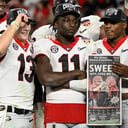
GO DEEPER
Mandel: 10 steps College Football Playoff expansion must take so the most important games aren’t overshadowed by the NFL
Once the regular season is shifted a week earlier, then the conference championship games move up to Thanksgiving weekend; Army/Navy to the first Saturday in December; the first-round games currently scheduled for the third weekend in December move up to the second weekend in December; and the quarterfinals, which in 2024 and ’25 will be on Dec. 31 and Jan. 1, move up to the third weekend in December. Everyone takes Christmas off, then we play the two semis on New Year’s Day, just as God intended.
Advertisement
There are a couple of other ways, but I don’t think they would fly. One is ending conference title games. Some leagues may decide to do so, anyway, but the SEC for one has no incentive to end its signature event, which sells out annually and accounts for a major chunk of its annual TV revenue. You could try to cut back from 12 regular season games to 11, but again, if I’m Alabama why am I going to voluntarily agree to play one fewer home game per year? They’re fun and they drive revenue. And I would not recommend trying to go straight from the 14-week season into a Playoff without giving the players a week off, especially given they may play as many as four more games.
The schedule the CFP announced last week is not necessarily awful, and I’ve even seen some excitement about the possibility of five straight nights of college and NFL playoff games in early January with the CFP semis on Thursday and Friday leading into Wild Card weekend on Saturday/Sunday/Monday. What I fear that will look like in practice, though, is college as the undercard to the main event. You want them to be played on college football’s official holiday, New Year’s Day — not Dec. 28/29 as in years past, or Jan. 9/10 as is coming. And you definitely want them as far away as possible from the Raging Behemoth that is the NFL playoffs.
I think a lot of people who are fans of schools like Utah, West Virginia, Pitt, Kansas State, etc. have this perception (fairly or unfairly) that national writers don’t care about those schools and like the idea of two mega conferences that leave out half of the current P5 teams. I’m curious what your opinion is. Do you like the idea of two mega conferences made up of “big brands,” or are you going to miss it when schools like the ones I’ve named (all relatively successful programs) are relegated to a minor league? — Nick, Philadelphia
I can’t speak for national writers as a whole, but to me, one of the beauties of college football is that every year there are countless compelling games/stories/figures that have nothing to do with Alabama, Georgia, Ohio State or Michigan. TCU’s run last year was a great story. So was Cincinnati’s the year before. And how many times do you wake up on a Saturday pumped for the big mid-afternoon SEC game on CBS only to miss the entire first quarter because you can’t stop watching the end of a crazy Syracuse–Purdue game?
So no, I would not root for a scenario where half the Power 5 teams are “relegated to a minor league.” But … hasn’t it already happened?
There were 65 Power 5 schools (including Notre Dame) as of last season, and by this time next year, 32 of them will be in the Big Ten or SEC. The Big 12 is “calling up” four new ones and the Pac-12 might absorb one or two as well, but the split will still be nearly 50-50. The Big Ten’s massive new TV deal kicks in this fall, and the SEC’s the year after, at which point the massive financial divide between those two and the other three will be complete. They are already mega-conferences, whether they go on to add another couple of schools sometime in the near future or not.

GO DEEPER
AAC to drop ‘P6’ brand as commissioner calls for end of P5
So I guess my question back would be, if Utah, West Virginia, etc., aren’t already considered “minor league” (they’re not), what future event is going to change that? I don’t buy the idea that the Big Ten and SEC are going to keep stockpiling schools to be able to say they can. And with the 12-team Playoff coming, the ACC, Big 12 and Pac-12 champs, at a minimum, are assured a berth in the “Major League’s” postseason. If anything, the same random Kansas–Oklahoma State overtime thriller you find yourself unexpectedly watching now will actually be more relevant come 2024, because those teams are playing for an automatic berth just the same as teams in the SEC or Big Ten.
The true Armageddon scenario for everyone is one I’ve speculated about on many occasions, but it would not be a case of the Big Ten and SEC farther separating themselves, it would be the 24-32 most “prestigious” schools breaking away from the traditional conference model entirely and forming something new. In that case, yes, you’d have a Premier League, and you’d have everyone else, to the great detriment of the programs you’re describing.
And there’s the rub. I am by no means rooting for a scenario that renders Iowa State or Purdue football completely irrelevant. But I’d be lying if I said I wouldn’t enjoy the heck out of 12 straight weeks of Alabama-Texas and Ohio State-Notre Dame games.
Stewart, could The Athletic explain how academics fit into transfer eligibility? Case in point: Nebraska. It has taken several transfers from the SEC. Given that academics are optional at most SEC schools, is there any concern that the transfers won’t cut it academically or even qualify for admission? — Tim B.
Apparently, regional stereotypes are so effective that you’re under the impression any transfer coming from the likes of Georgia or Florida would not be able to cut it academically at … checks notes … Nebraska? Is that school now the Stanford of the Great Plains and nobody told me?
If so, it may finally explain how the Scott Frost era went sideways.
(Photo: Julio Cortez / Associated Press)
